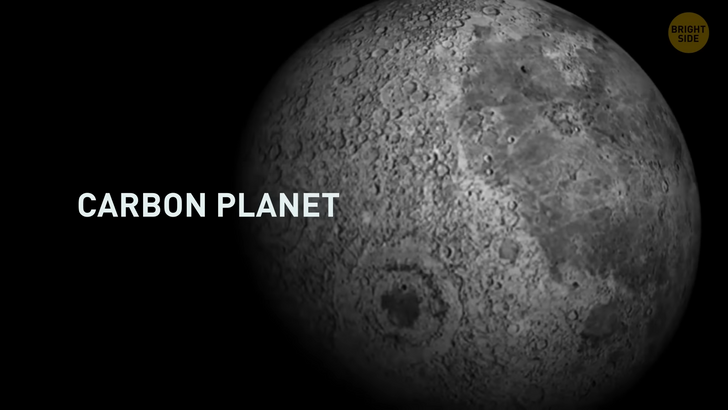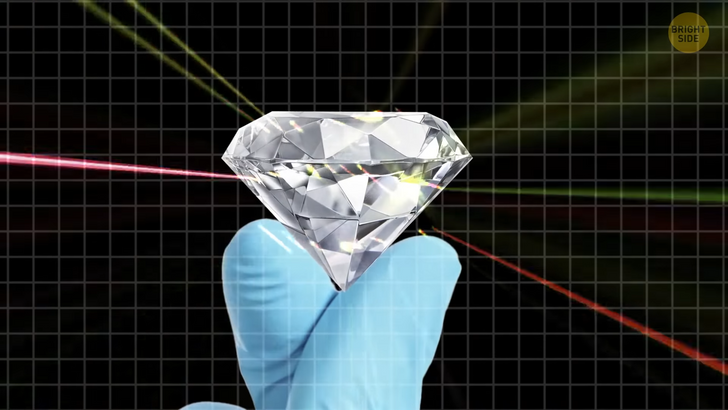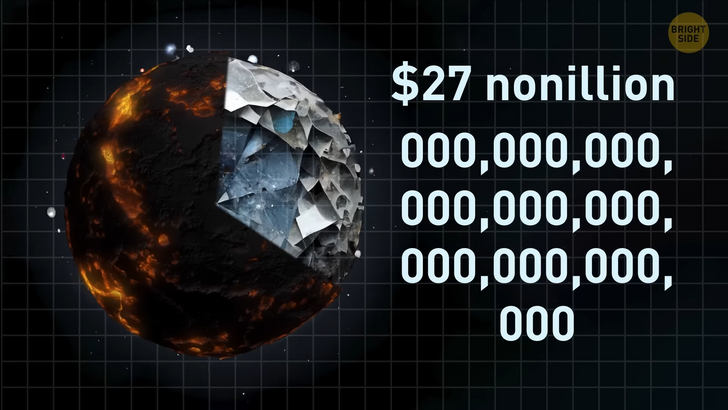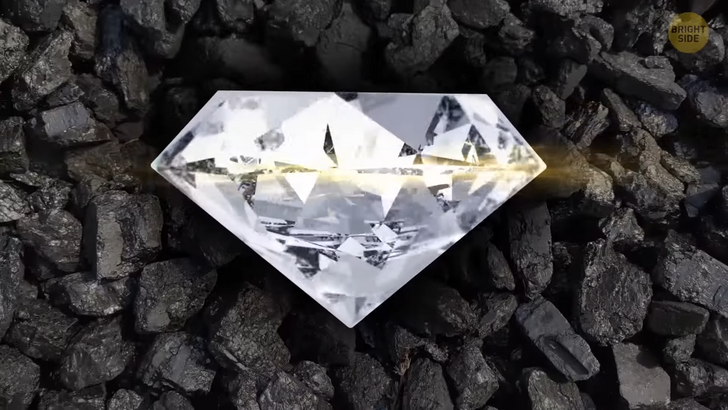10 Visual Riddles That Will Train Your Eyes

In the vast expanse of the universe, there are planets unlike any we’ve seen before — planets with a treasure trove of diamonds. What mysteries do these sparkling worlds hold? What do they look like? And most importantly, just how much would it all cost?! Let’s find out.
First of all, let’s take a look at diamonds in general. We see them as rare and valuable gems. But did you know that they actually come from something as ordinary as carbon? That’s right! This is the same element that’s found in your pencil lead, or coal.

This is also the key ingredient in a diamond. But how does a plain old carbon atom turn into a dazzling diamond? Well, it all starts deep beneath the Earth’s surface. At depths of around 100 miles, carbon is exposed to temperatures of over 2,000°F and pressures over 825,000 pounds per square inch! That’s like putting the weight of three elephants on a postage stamp!
Under these extreme conditions, the carbon atoms bond together in a unique way. They form the crystal lattice structure that gives diamonds their distinctive shape. This process can take millions or even billions of years, as the carbon slowly makes its way closer to the Earth’s surface through volcanic activity.
And then, finally, the diamond it formed. After that, it may stay hidden in the Earth for thousands of years, until it’s brought to the surface through volcanic eruptions. From there, the rough diamond is cut and polished into the beautiful gems that we know and love.
So why are diamonds so valuable? Well, it’s partly because of their rarity. Only a small fraction of the diamonds that are formed actually make it to the surface. But it’s also because of their beauty and durability. Diamonds are the hardest substance known to humans, and they have a unique ability to refract light in a way that makes them sparkle and shine.

Diamonds also have a wide range of practical applications. They’re used in cutting tools, grinding wheels, and even in the tips of surgical instruments. And thanks to advances in technology, scientists are finding new ways to use diamonds in fields like electronics, energy storage, and medicine. All this goes to show that sometimes the most extraordinary things can come from the most ordinary of elements. Now that we know this, let’s get back to our diamond planet.
Can planets like this even exist? Actually, yes, they can! In fact, we come across diamonds in space much more often than on Earth! In space, extreme pressure and temperatures are very common. That’s why the universe, and even our Solar system, is actually incredibly wealthy! Your regular asteroid can cost millions of dollars.
Helium, which we can find almost everywhere in space, has a huge energy potential. It’s not surprising that humanity has been discussing the possibility of space mining for some time. Now, as I mentioned earlier, diamonds are formed deep within the Earth under conditions of extreme heat and pressure. Scientists believe that a similar process could occur on a planet that’s rich in carbon.

There are a few possible ways it could happen. For example, when two planets or asteroids that contain a lot of carbon collide with each other. The collision would create a shockwave that would push the carbon atoms together so tightly that they would form a diamond.
The second way it could happen is if this region of space contains a lot of carbon. If the conditions are right, then the carbon atoms could come together and form a planet-sized diamond. It’s like if you have a lot of Lego blocks, and you put them together to create a big Lego structure. In other words, if two carbon-rich objects collide with each other, the carbon atoms can be squeezed together so tightly that they form a diamond.
And now, surprise-surprise — these planets actually do exist! The planet we’re talking about is called 55 Cancri e. It’s one of the five planets in a small system in the constellation of Cancer. Its star is actually so bright that you can see it with the naked eye! It’s located 40 light-years away from us — which may be trillions of miles, but on a space scale, it’s pretty close.
55 Cancri e was first discovered in 2004. However, we didn’t learn until 2012 that it was the first known diamond planet. All thanks to the research of scientists from Yale University. This planet is the super-Earth. This is a class of planets that are larger than our Earth, but too small to be considered giants. It’s about twice as big as our Earth and about 8 times heavier. The planet rotates around its star really fast. It completes a full turn in just 18 hours!

This means that one year on the planet is less than a day on Earth. It’s also tidally locked to the star. In other words, one side of this planet is always turned towards the star, and therefore is incredibly hot, while the other is in eternal darkness. Just like with our Moon!
Also, 55 Cancri e is about 25 times closer to its star than Mercury is to our Sun. As a result, the temperatures there are just enormous! On the “day” side they’re just above 4,000°F, and on the “night” side — which, by the way, is considered the “cold” one — over 2,500°F! Doesn’t really sound like a good place to chill out, does it?
Well, it may not be good for us... But for diamonds, it’s just perfect. After studying the planet, scientists concluded that it’s a rocky world full of carbon. But this carbon isn’t contained there in the form of gas; instead, it’s in the form of graphite (yes, the same one found in your pencils) and, of course, diamonds. According to some estimates, diamonds make up at least a third of 55 Cancri e! It can cost about 27 nonillion dollars! There are 30 zeros in this number. Can you imagine that?!

But the most interesting question is... What would such a planet look like? First of all, the thermal evolution and tectonic processes there are completely different compared to our Earth. In other words, the planet should be full of strange volcanoes and some bizarre volcanic activity. Weird mountains and stuff like that.
In addition, the planet is probably covered with large clouds of dust, and the atmosphere on it is very dense. Oh, and the weather there is definitely crazy. The researchers are planning to learn about the composition of 55 Cancri e’s atmosphere in the future. But right now, it’s already pretty clear that this planet can’t be called “habitable”.

Well... Finding life there is theoretically possible, but it’s very unlikely. Life on a diamond planet could potentially exist deep underground, for example. On Earth, we’ve already observed bacteria and microbes that can survive under incredibly extreme conditions. These guys are very resilient. They’re capable of turning chemicals into energy and surviving... basically anywhere. So, on a diamond planet, life could potentially exist in this form. And who knows?
Extraterrestrial life may also take forms that are completely unknown to us. Wouldn’t it be cool to discover some crystal creatures, capable of surviving in the most extreme heat? That would be mind-blowing. And guess what? It’s not just 55 Cancri e that’s full of diamonds. Other potential diamond hotspots include Pluto’s largest moon, Charon, and a Jupiter style exoplanet rich in carbon found 1,200 light-years from Earth called WASP-12b.
Scientists even think that diamonds rain on Saturn and Jupiter regularly! All this was discovered by the researchers from the Arizona State University. They claim that diamond planets are not that rare at all. According to a 2020 scientific report, they form around certain types of stars that have high carbon-to-oxygen ratios.

They went above and beyond to study these space gems. They subjected carbide silicon to insanely extreme pressures above 50 GPA and temperatures as high as 2500 degrees Kelvin to see what would happen. And they discovered that under these wild conditions, carbide silicon transforms into diamond and silica!
So, if you’re looking for some diamond bling, you might not have to go too far. You could go intergalactic and explore some of these diamond planets. These exoplanets are unlike anything in our Solar system, and who knows what other awesome discoveries are out there waiting for us to find them.











